Beef Broth Cooked for 2 Hour




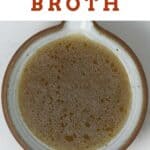
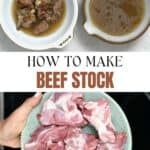

How to make beef broth (or stock) at home on the stovetop (+ other methods included!). This 2-in-1 recipe focuses on how to make a fragrant, savory, meaty beef broth and cook meat ready to use in other dishes. Then, how to continue the process with the beef bones for a hearty bone broth (aka beef stock). This beef bone broth recipe is gluten-free, sodium-adjustable, packed with healthful nutrients, and can be organic!

Having already posted methods for vegetable stock and bouillon cubes, and chicken broth/stock, now it's the turn to learn how to make beef broth (and stock) with beef meat, perfect for adding to soups and stews.
As usual, I love that making homemade means that you can be 100% in control of ingredients. This means you can easily make organic beef broth, gluten-free, reduced-sodium, or sodium-free, and more. Plus, you can use your choice of beef cut, veggies, and aromatics – tweaking ingredients with each new batch until you find the "perfect" slow-cooked bone broth. Not to mention that you can make a massive batch to freeze for months of homemade beef broth.

For the below recipe, I've included methods on how to make beef bone broth, with a light, aromatic broth, and tender, flavorful boiled meat (ready to add to stews!). I've also included how to make a heartier slow-cooked bone broth (beef stock), with all of my top tips and recommendations for both. PLUS, check out the FAQs for Instant Pot and Slow Cooker beef stock methods!
What is Beef Stock vs. Broth?
Though the terms are often used interchangeably, the two are actually different. Whereas beef broth is made by simmering beef meat in water with various aromatics, veggies, and herbs, beef stock focuses more on the beef bones (rather than meat) for an even lower, slower simmer and thicker, richer results.
For this recipe, we're making beef broth. The shorter cooking time imparts flavor into the liquid while only cooking the beef for enough time to be fully cooked and ready to enjoy in other dishes, like soups and stews (the way I use them).
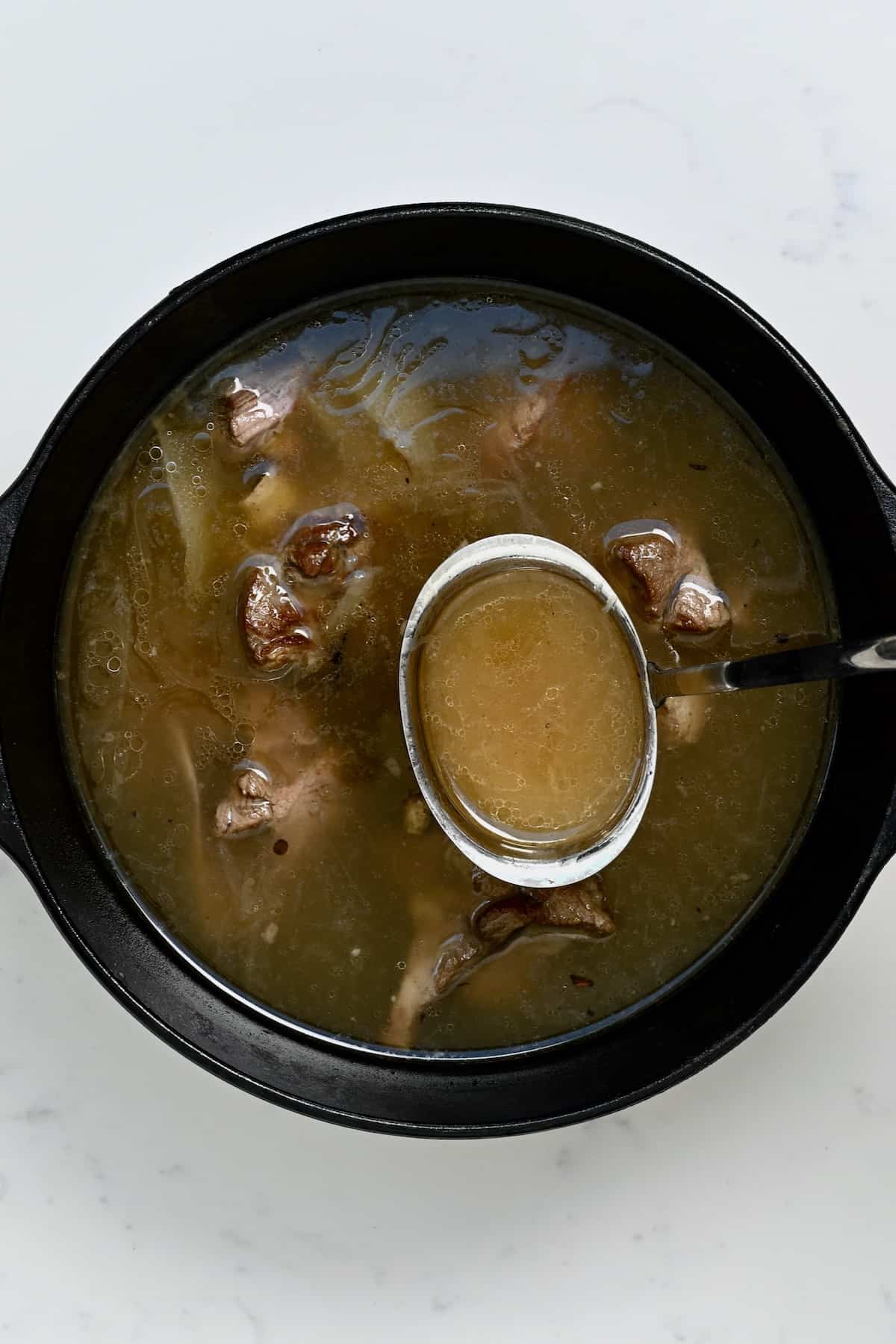
In terms of texture, beef broth is lighter with a thinner consistency. However, thanks to the gelatin and marrow within the bones, a slow-simmered beef stock (bone broth) is richer, with a thicker (slightly gelatinous) consistency.
Within this post, I'm focusing on making homemade beef broth. However, I've included the method for using the bones for a beef bone broth recipe, too. The stock could then be used as a base for gravy, sauces, stews, cooked grains, etc.
What is in Beef Broth?
- Beef: there are various cuts of beef that you could use for slow-cooked bone broth vs. stock, i.e., beef shank, short ribs, belly, chuck, etc. If you want to make a beef bone broth recipe, you can also use various beef bones: knuckle, rib, leg, neck, shanks, etc.
- Vegetables: for this homemade beef stock, this time I used onion (skin on or off). You can also add garlic, carrots, etc – see below for more suggestions.
- Herbs/Spices: you can use a very simple combination of bay leaves and salt (optional – use around 1 teaspoon per 3 cups stock for the equivalent of a store-bought "low-sodium" beef broth). However, I've also included cinnamon, cardamom, and cloves (which works well in Middle Eastern stews, which is how I plan to use it).
- Water.
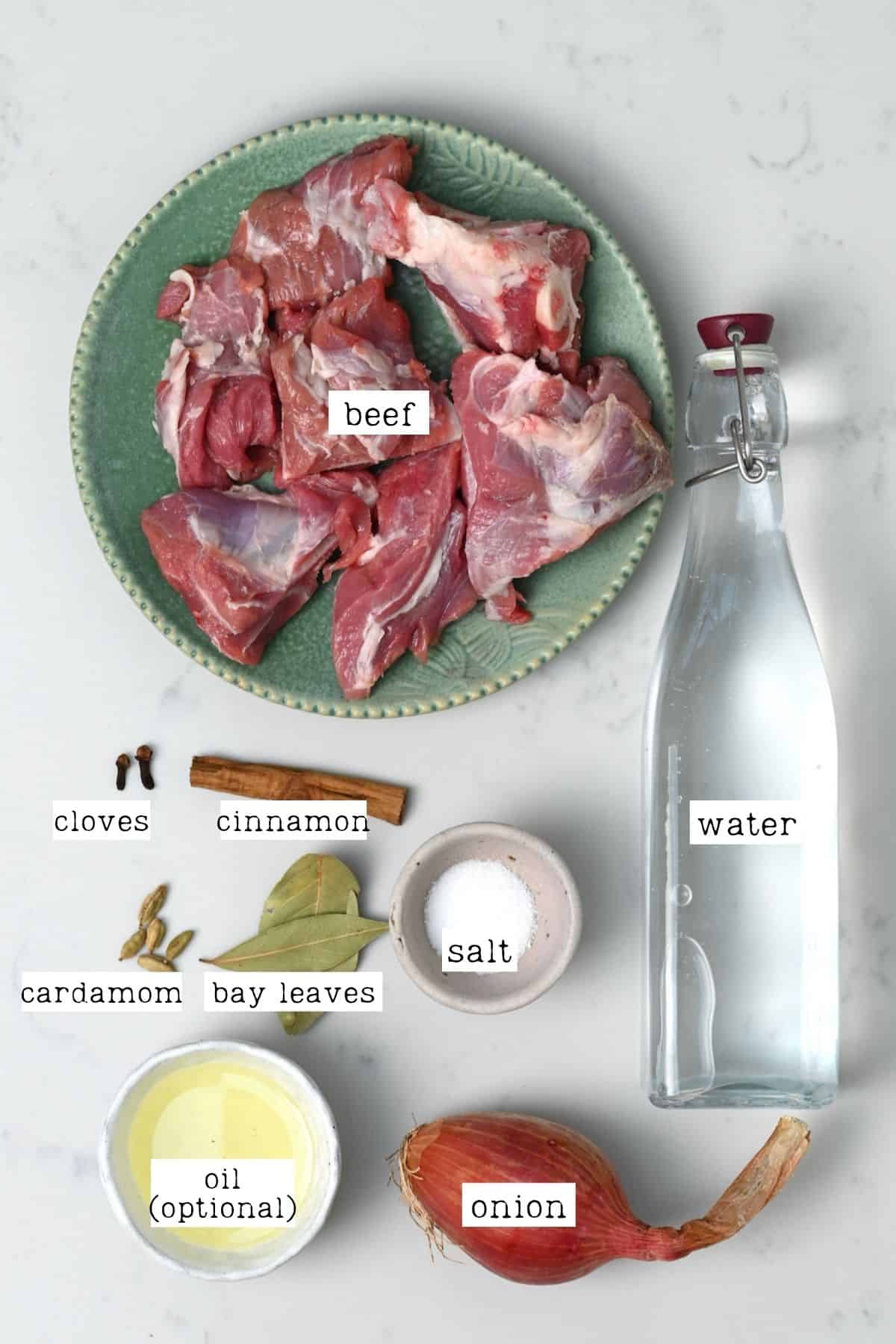
Other Optional Add-ins & Variations
- Acid: if you're using bones, it's best to add an acidic medium. Lemon juice, sherry vinegar, apple cider vinegar, red wine, etc., would work. This helps to break down the bones AND add a slight depth of flavor.
- Herbs: there are tons of ways you can adapt this beef bone broth recipe to your liking with other herbs and spices. Options include parsley, thyme, rosemary, oregano, marjoram, etc.
- Other vegetables: garlic, celery, ginger, leeks, carrots, or scallion greens could also be added. Alternatively, vegetable scraps would also work (but the flavor will vary).
- Bouillon powder: if you're avoiding too much salt, then skip right past this. However, if not, adding a little bouillon powder can really help enhance the overall flavor of the slow-cooked bone broth.
- Umami: you can enhance the umami flavor in the beef bone broth recipe by adding ingredients such as dried mushrooms, seaweed, miso paste, soy sauce, or tomato sauce.
How to Make Beef Broth and Stock
Step 1: Prep the ingredients
First, rinse the meat and remove any excess fat if preferred. If needed, cut into chunks that fit into your pot.
Then, roughly chop the onion and prepare the vegetables by rinsing them (if using).
Step 2: Transfer the ingredients to a saucepan
Add the beef and the rest of the ingredients to a large saucepan and pour enough water to just barely cover the beef. Then bring to a boil over medium-low heat.
Top tip: optionally, you can add any salt at the end of the process, after reduction, so you don't accidentally over-salt the broth; however, you can leave it salt-free.
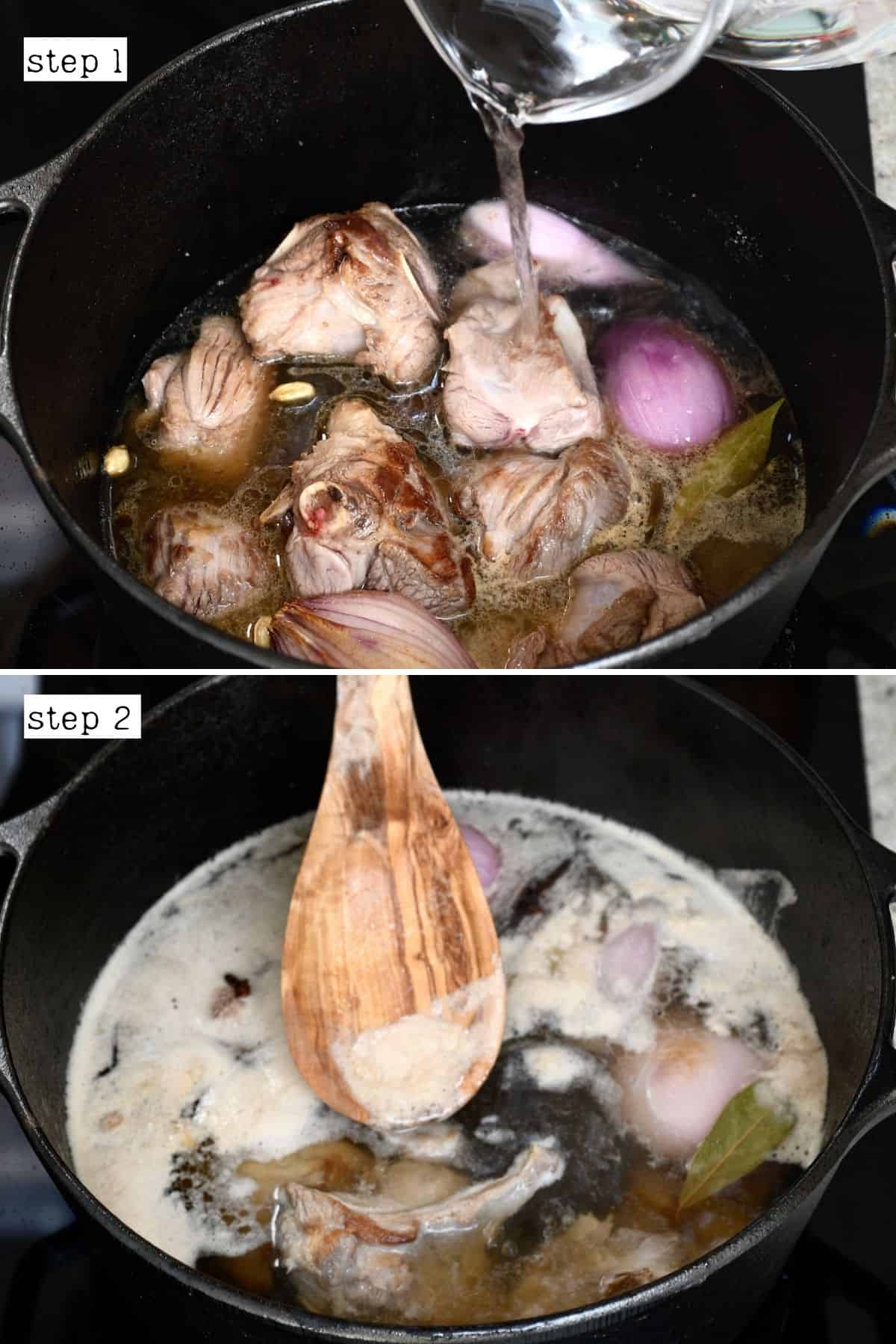
For extra flavor, before adding the water, lightly sauté the beef meat with oil until browned. This helps to lock in flavor and should yield a richer broth. When using the beef bones, I recommend baking them. Drizzle them (and all the vegetables) with oil. Then bake in the oven at 450ºF/230ºC for 20-25 minutes, or until lightly browned. Add a little water to de-glaze the pan and add all the juice to the stock pan. If you're making bone broth, first blanch the bones (see recipe notes).
For the first 30-40 minutes after the mixture gets close to boiling, you may notice a "scum" (foamy substance) appearing on the surface of the water. Use a skimmer or slotted spoon to remove it as it appears.
Don't discard this in the sink, as it can solidify and block pipes.
Step 3: Simmer the beef broth
When the scum is no longer appearing, reduce the heat to low, cover, and allow to cook for about 1.5 hours.

For meaty beef broth recipe: After the time is up, taste the broth and adjust any of the seasonings. Depending on the beef pieces used, you may be able to simmer it for between 2-3 hours without it becoming overcooked and chewy. So, feel free to continue cooking and testing every 10 minutes (for richer flavor). Once the mixture has reached your desired taste, remove from the heat and enjoy (no need to strain).
For beef bone broth recipe (beef stock): I like to make a double batch of the above ingredients when making beef stock, using ½ bones and ½ meat. After 1.5 hours, follow the above instructions, removing the tender meat, the veggies (you can leave them to simmer for longer, but they won't be pleasant to use for other purposes so may go to waste), and ½ the liquid. With the remaining ½ of the liquid (and beef bones), you can continue to simmer the mixture for between 4-6 hours (minimum), up to 24 hrs (48 hrs is possible, though I've never tried, so I can't guarantee results).
Finally, remove the beef stock from the heat and strain through a fine mesh sieve.
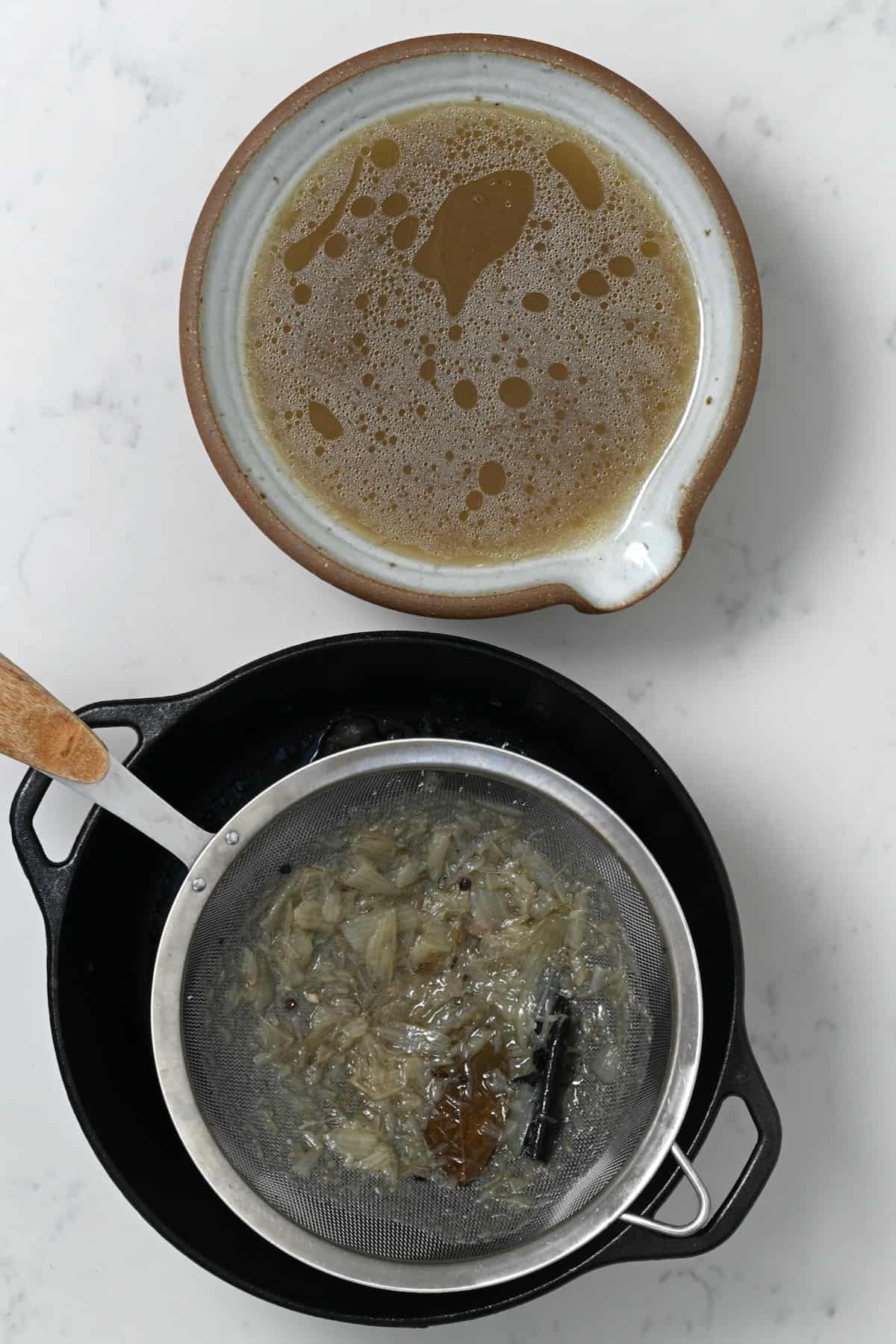
For both methods, allow the mixture to cool slightly before either using immediately or storing for later.
Step 4: (Optional) Reduce the beef broth/stock
If you want to make reduced beef stock and save on storage space, no problem! First, remove all the solids (meat and veggies) from the liquid. You can then continue to simmer it over low heat until it has reduced by half.
To use the homemade beef broth, simply add the extra water back in (in a 1:1 ratio. i.e., 1 cup broth to 1 cup water). Or adjust the amount of water added back into the liquid based on how concentrated you want the flavor to be.
How to Use Beef Broth/Stock
While there are tons of ways to use both the meat and liquid from this homemade beef broth recipe, here are some of my top suggestions for the broth.
- To cook grains in place of water – rice, pasta, quinoa, risotto, etc.
- Use as the base for soups and stews – okra stew (bamia), butter bean stew (fasolia), and pea and carrot stew (bazella w riz).
- Add to casseroles or French onion soup.
- Use to make gravy and sauces.
- Replace the water when making polenta or savory oatmeal.
- Use within sauteed/stir-fried dishes (in place of oil).
- You can use the bone broth for drinking: bone broth is not only warming, but it's rich in vitamins, minerals, and other healthful nutrients that contain benefits for our own bones, digestive system, and immune system. Or head on over to Healthline to read more about the benefits of bone broth.

How Long Does Beef Broth Last in the Fridge/Freezer?
Fridge: allow the broth to cool (place your pan/bowl over an ice bath to speed this process up). Then transfer the beef broth and meat to airtight containers and store in the refrigerator for up to 5 days.
If you've made bone broth, the mixture will gelatinize slightly when chilled but return to a liquid when reheated. You may also notice the fats from the dish separate and form a layer over the broth. This acts as a natural "preservative" to the ingredients below. Thus, I recommend keeping it there and simply lifting it to access what's below.
Top Tip: I recommend labeling the jars/containers you use to store the homemade beef broth (especially when freezing) to avoid waste.
Freezer: there are several ways that you can successfully freeze this slow-cooked bone broth/ stock, including:
In bags: this works best for the liquid alone. Portion it out and separated it into several Ziplock bags (I use reusable silicone bags). Lay the bags flat and freeze. Once solid, you can store them flat or upright. To quickly defrost, place the bag/s in a basin of hot water.
Ice-cube tray/pan: also great for portioning the liquid beef broth. Freeze in ice cube trays, then transfer to a freezer-friendly bag/container. Alternatively, pour the mixture into a large dish and freeze for several hours. Then slice into cubes and transfer to a Ziplock bag.
Large jars: you can use jars for the beef broth alone or the mixture with meat. Transfer it to one or several jars, leaving at least 1-inch headspace (for expansion when it freezes). To use, allow the mixture to thaw in the fridge overnight.
You can freeze the beef broth for up to 3-4 months no matter which method you use.

FAQs
What is the best beef for beef broth?
I like to use the same cuts of beef for broth-making as I would for stewing (especially since that's the exact purpose I usually use the meat for). I recommend cuts including bone-in short ribs, chucks, oxtail, cross-cut shanks, etc.
Can I use beef broth instead of beef stock?
In many cases, yes, just make sure to adjust the seasonings (salt) accordingly.
Can I use the leftover solids from the beef broth?
If you cook the beef broth for the minimal time (1.5 hr simmer time), the vegetables are still usable to add into pureed soups/sauces. To avoid wasting the beef meat, only boil it for a regular poaching time (i.e., 60-90 minutes), then remove the flesh from the bones. Place the bones back in the pot and continue to simmer until ready for more decadent beef stock (rather than broth). That way, you can still use the beef (before it becomes overdone, tough, and tasteless).
When left to simmer for several hours, it's best to discard all the solids as they won't have much flavor at all. The meat will also be tough and inedible.
How to avoid cloudy beef broth?
To avoid cloudy homemade beef broth, you shouldn't allow the mixture to boil. Instead, let it simmer on the lowest heat for longer. On top of that, removing the "scum" reduces the cloudiness.
However, you may want to do a two-boil method to ensure the beef is fully cooked. Boil the beef for 4-5 minutes first, discard the water, add more water, and continue with the recipe as written. Also, make sure to remove all the foamy "scum" from the top of the pot when it appears.
Can I use a slow cooker for cooking beef stock (bone broth)?
I haven't tried. However, an Instagram follower suggested the following – first sauté/roast the beef, then add all the ingredients and cook on LOW for 10-12 hours (or longer, up to 24 hours).
Can I make instant pot beef bone broth?
Once again, following advice from an Instagram follower, I've been told that you can make instant pot beef bone broth by cooking it on high for 2 hours then using the natural steam release.
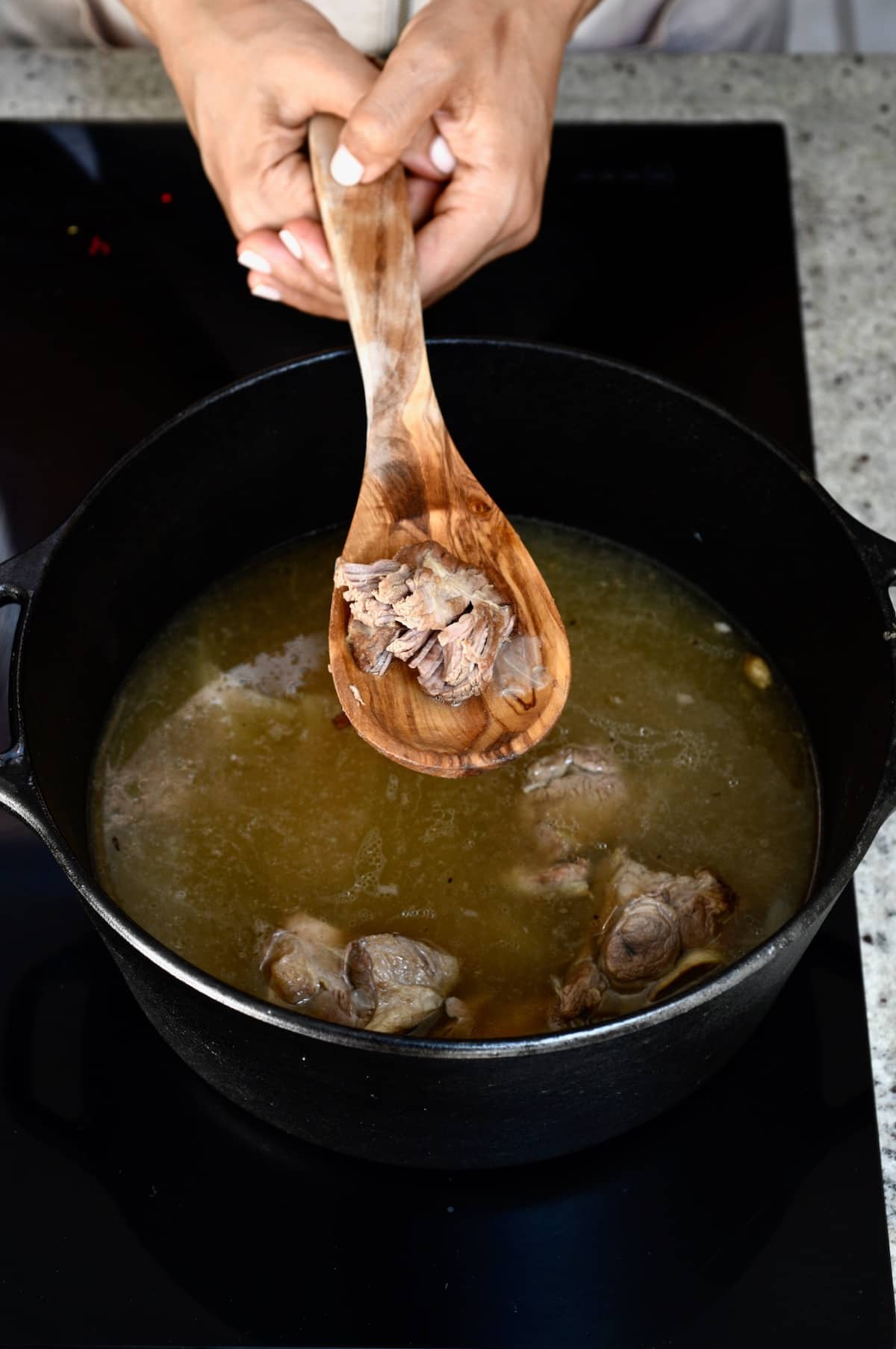
Recipe Notes and Top Tips
- Frugal Top Tip: a great way to save money and waste is to gather all the bones left from making various steaks/meals. Store in a bag in the freezer until you gather enough to make the beef broth/ stock (for several months).
- Label your containers: to avoid waste (especially when freezing), label each container with the date (at a minimum). You could also label it with the main aromatics, etc., to keep track of different experiments.
- Make notes of your experiments: leading on from the above point, making homemade stock/broth can become a game of experimentation, with no batch the same as the one before. For that reason, it's good to keep notes somewhere to take note of what you've done differently (to know what you like most, etc.)
- To blanch the beef bones: if you're planning on making beef stock, I recommend blanching the bone before roasting/simmers. This helps to remove impurities from the bones and improves the flavor. To do so, add the bones and enough cold water to cover them to a large saucepan. Bring to a boil and cook for around 20 minutes. Then drain, pat dry, and continue with roasting the bones (or re-boiling, but roasting is best for added flavor!).
- Adjust salt to personal preference: you can make entirely salt-free or low-sodium beef broth (or to-taste). I prefer to use a minimal amount of sodium. That way, I can salt each recipe I use it in individually.
- The oven method: aside from stovetop, crockpot, and slow cooker methods, you can also simmer the slow-cooked bone broth/ beef stock in the oven! To do so, follow the beginning of the recipe (roasting and optional "blanching"). Then transfer to a large Dutch oven and transfer to a preheated oven at 200ºF/95ºC. Leave to simmer overnight (or around 8-12 hours).
Warming Soup Recipes
- Japanese ramen noodle soup
- Lebanese lentil soup
- One-pot turmeric, ginger & pumpkin immune-boosting soup
- Thai vegan green pea soup
- Butternut squash carrot soup
- Vegan potato leek soup
- Green Bean Stew (Braised Green Beans)
If you try this meaty beef broth or beef bone broth recipe (beef stock), I'd love to hear your thoughts/questions below. Also, I'd really appreciate a recipe card rating below, and feel free to tag me in your recipe recreations on Instagram @Alphafoodie !
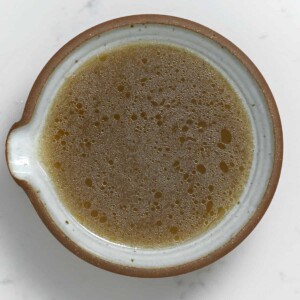
- 1.1 lb beef i.e., beef shank, short ribs, belly, chuck, etc. If you want to make a beef bone broth recipe, you can also use various beef bones: knuckle, rib, leg, neck, shanks, etc.
- 6 cups water
- 1 medium onion
- 1 teaspoon salt optional and adjustable
- 2 large bay leaf
- 5 cardamom pods optional
- 2 cloves optional
- 1 cinnamon stick optional
- 1 tablespoon cooking oil optional to sear the beef if wanted
Check the notes below for optional add-ins and variations for the spices and herbs.
Step 1: Prep the ingredients
-
Rinse the meat and remove any excess fat if preferred. If needed, cut into chunks that fit into your pot.
-
Roughly chop the onion and prepare the vegetables by rinsing them (if using).
Step 2: Transfer the ingredients to a saucepan
-
Add the beef and the rest of the ingredients to a large saucepan and pour enough water to just barely cover the beef. Then bring to a boil over medium-low heat.
Top tip: optionally, you can add any salt at the end of the process, after reduction, so you don't accidentally over-salt the broth; however, you can leave it salt-free.
For extra flavor, before adding the water, lightly sauté the beef meat with oil until browned. This helps to lock in flavor and should yield a richer broth. When using the beef bones, I recommend baking them. Drizzle them (and all the vegetables) with oil and bake in the oven at 450ºF/230ºC for 20-25 minutes, or until lightly browned (add a little water to de-glaze the pan and add all the juice to the stock pan). If you're making bone broth, first blanch the bones (see recipe notes).
-
For the first 30-40 minutes after the mixture gets close to boiling, you may notice a "scum" (foamy substance) appearing on the surface of the water. Use a skimmer or slotted spoon to remove it as it appears.
Don't discard this in the sink, as it can solidify and block pipes.
Step 3: Simmer the beef broth
-
When the scum is no longer appearing, reduce the heat to low, cover, and allow to cook for about 1.5 hours.
-
For meaty beef broth recipe: after the time is up, taste the broth and adjust any of the seasonings. Depending on the beef pieces used, you may be able to simmer it for between 2-3 hours without it becoming overcooked and chewy, so feel free to continue cooking and testing every 10 minutes (for richer flavor). Once the mixture has reached your desired taste, remove from the heat and enjoy (no need to strain).
For beef bone broth recipe (beef stock): I like to make a double batch of the above ingredients when making beef stock, using ½ bones and ½ meat. After 1.5 hours, follow the above instructions, removing the tender meat, the veggies (you can leave them to simmer for longer, but they won't be pleasant to use for other purposes so may go to waste), and ½ the liquid. With the remaining ½ of the liquid (and beef bones), you can continue to simmer the mixture for between 4-6 hours (minimum), up to 24 hrs (48 hrs is possible, though I've never tried, so I can't guarantee results).
-
Once ready, remove the beef stock from the heat and strain through a fine-mesh sieve.
For both methods, allow the mixture to cool slightly before either using immediately or storing for later (in the fridge or freezer).
Step 4: (Optional) Reduce the beef broth/stock
-
If you want to make reduced beef stock/broth and save on storage space, no problem! First, remove all the solids (meat and veggies) from the liquid. You can then continue to simmer it over low heat until it has reduced by half.
To use the homemade beef broth, simply add the extra water back in (in a 1:1 ratio. i.e., 1 cup broth to 1 cup water). Or adjust the amount of water added back into the liquid based on how concentrated you want the flavor to be.
- Frugal Top Tip: a great way to save money and waste is to gather all the bones left from making various steaks/meals. Store in a bag in the freezer until you gather enough to make the beef broth/ stock (for several months).
- Label your containers: to avoid waste (especially when freezing), label each container with the date (at a minimum). You could also label it with the main aromatics, etc., to keep track of different experiments.
- Make notes of your experiments: leading on from the above point. Making homemade stock/broth can become a game of experimentation, with no batch the same as the one before. For that reason, it's good to keep notes somewhere to take note of what you've done differently (to know what you like most, etc.).
- To blanch the beef bones: if you're planning on making beef stock, I recommend blanching the bone before roasting/simmers. This helps to remove impurities from the bones and improves the flavor. To do so, add the bones and enough cold water to cover them to a large saucepan. Bring to a boil and cook for around 20 minutes. Then drain, pat dry, and continue with roasting the bones (or re-boiling, but roasting is best for added flavor!).
- Adjust salt to personal preference: you can make entirely salt-free or low-sodium beef broth (or to-taste). I prefer to use a minimal amount of sodium. That way, I can salt each recipe I use it in individually.
- The oven method: aside from stovetop, crockpot, and slow cooker methods, you can also simmer the slow-cooked bone broth/beef stock in the oven! To do so, follow the beginning of the recipe (roasting and optional 'blanching'). Then transfer to a large Dutch oven and transfer to a preheated oven at 200ºF/95ºC and leave to simmer overnight (or around 8-12 hours).
Other Optional Add-ins & Variations:
- Acid: if you're using bones, it's best to add an acidic medium. Lemon juice, sherry vinegar, apple cider vinegar, red wine, etc., would work. This helps to break down the bones AND add a slight depth of flavor.
- Herbs: there are tons of ways you can adapt this beef bone broth recipe to your liking with other herbs and spices. Options include parsley, thyme, rosemary, oregano, marjoram, etc.
- Other vegetables: garlic, celery, ginger, leeks, carrots, or scallion greens could also be added. Alternatively, vegetable scraps would also work (but the flavor will vary).
- Bouillon powder: if you're avoiding too much salt, then skip right past this. However, if not, adding a little bouillon powder can really help enhance the overall flavor of the slow-cooked bone broth.
- Umami: you can enhance the umami flavor in the beef bone broth recipe by adding ingredients such as dried mushrooms, seaweed, miso paste, soy sauce, or tomato sauce.
Check the blog post for more ingredients notes, the full storage instructions, and answers to top FAQs!
Calories: 41 kcal | Carbohydrates: 3 g | Protein: 1 g | Fat: 3 g | Saturated Fat: 1 g | Polyunsaturated Fat: 1 g | Monounsaturated Fat: 2 g | Trans Fat: 1 g | Sodium: 710 mg | Potassium: 94 mg | Fiber: 1 g | Sugar: 1 g | Vitamin A: 4 IU | Vitamin C: 2 mg | Calcium: 29 mg | Iron: 1 mg
Source: https://www.alphafoodie.com/how-to-make-beef-broth-stock/

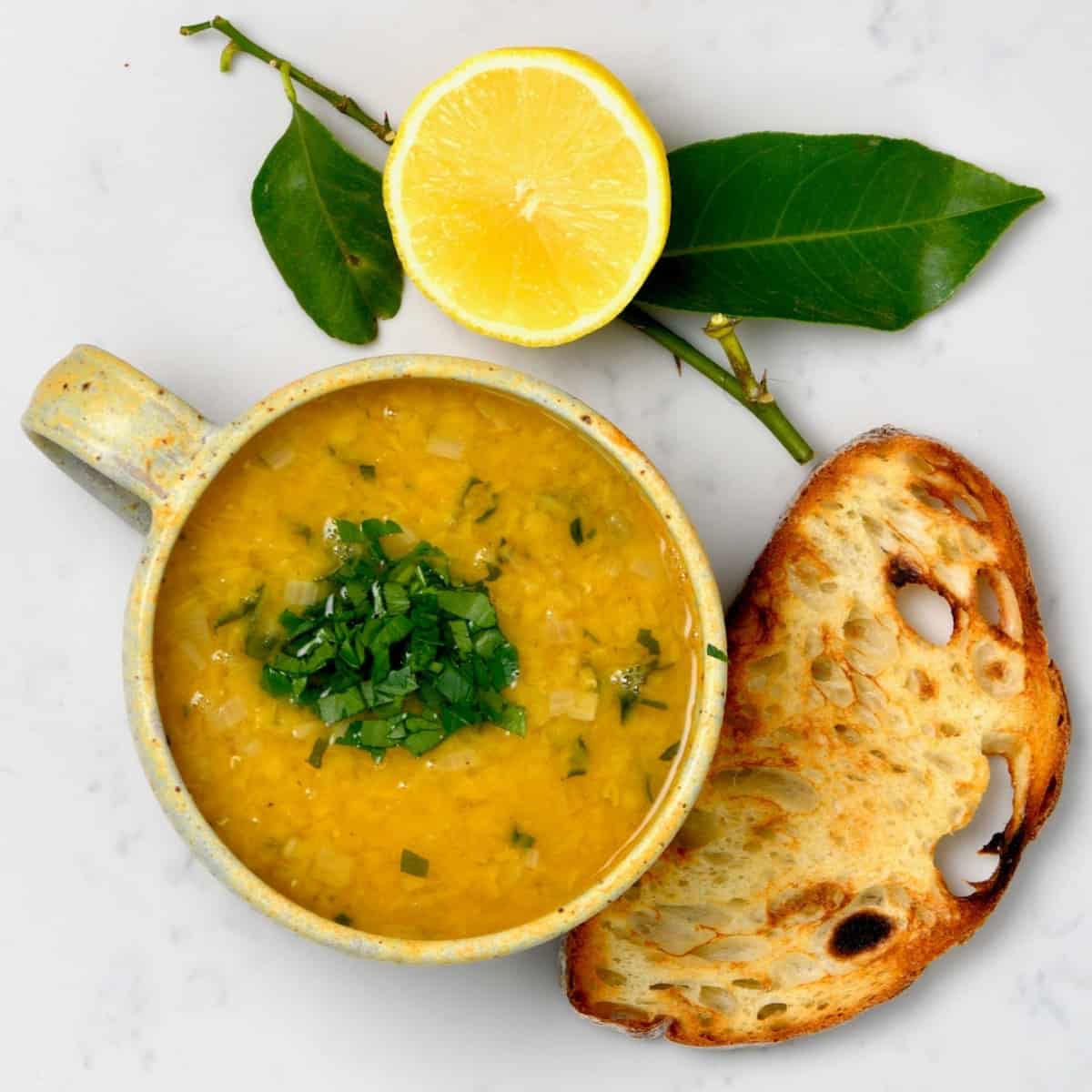

0 Response to "Beef Broth Cooked for 2 Hour"
Post a Comment